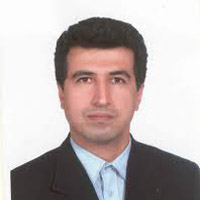Reconstruction of the Central Zagros paleo climate and paleo environment
The study of lake sediments has been widely used in recent decades to identify past climate and environmental changes. Lake basins have significant spatial and temporal patterns and provide valuable evidences of physical and chemical changes. However, in general, the climate of the Holocene period has been more stable and uniform than previous glacial and interglacial periods. However, there have been many sudden climate events that have affected the lifestyles and activities of human groups. In this study, using the results of geological, climatological and archaeological studies, climate change and the environment of the Central Zagros from the Late Pleistocene to the present have been studied and reconstructed.
In this research, multi-proxy method has been used. The results of geochemical analyzes, magnetic susceptibility, chronology and palynology of sedimentary cores has taken from Hashilan wetland in Kermanshah were studied and analyzed.
The results of the analysis showed that most of the identified Holocene climatic events in the world have also occurred in Central Zagros. In the last period of glaciation, the climatic conditions of this region were cold and dry with the predominance of physical erosion and the dominant vegetation of the region was steppe and Chenopodiceae. Before the onset of Younger Dryas event, there was a warm and humid period in the region that coincided with the hot and humid period of Boling Allerod in Europe. After the end of Younger Dryas cold event, the Early Holocene period began 11,000 years ago in the region. The Early Holocenechr('39')s humidity in the Central Zagros region was not enough to grow Quercus trees, and compared to Jordan and Turkey, the climate was drier. Due to changes in insolation (the amount of radiation received by the sun within 60 degrees north: (Milankovic cycle) and its increase in the northern hemisphere, the amount of radiation received by the northern hemisphere increased in the summer, which led to the expansion of Inter Tropical Convergence zone belts and Subtropical high pressures and the summer monsoons of the Indian Ocean zones became wider. In the Late Holocaust, the Zagros region was dominated by STHPs and received very little spring and summer rainfall due to the influx of high-pressure tropics. As the insolation reducing in the middle Holocene and the STHPs retreat to lower latitudes, the humidity entry from Atlantic Ocean and Mediterranean into the region increased, and quercus trees grew in the area during the wet period of 7,500 years ago. In Late Holocene, the intensity of dry climatic events has increased so much that the driest period was 3,200 years ago.
- حق عضویت دریافتی صرف حمایت از نشریات عضو و نگهداری، تکمیل و توسعه مگیران میشود.
- پرداخت حق اشتراک و دانلود مقالات اجازه بازنشر آن در سایر رسانههای چاپی و دیجیتال را به کاربر نمیدهد.



